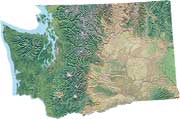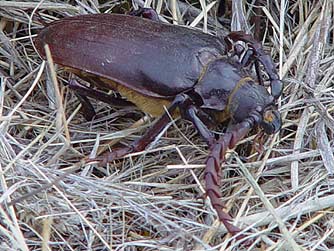
California prionus beetle or Prionus californicus
The California prionus beetle, also called the prionus root borer, is a large, boring insect whose larva feed on the roots of a variety of trees and shrubs-- among them oak, cherry, cottonwood, peach, plum, poplar, prune, English and black walnut, and some conifers-- often killing them. The beetles on this page were found around black locust, maple and ponderosa pine trees, and antelope bitterbrush.
Application of pesticides is ineffective in suppressing its populations, though these beetles might be kept in check by parasitoid wasps which hunt for larvae, if pesticides aren't present. As adults, they provide food for night-hunting animals including coyotes and pallid bats.
Prionus adults emerge from midsummer into fall, move about nocturnally and drawn to light, may fly into windows at night, crashing violently. Among the largest of the long-horned beetles, Prionus adults may be over 2 inches long with grubs growing over 4 inches long. Prionus califonicus range from Central California to Alaska and east into the great basin states and Eastern Washington.
These beetles are shiny reddish-brown to black, have coarse spines on the pronotum, and serrated antennae with conical segments in males or more cylindrical segments in females. A similar resident beetle, the ponderous borer (or Western pine sawyer), has larva that feed on the roots of dead or dying pine and douglas fir trees. The pictured larva was found several feet underground in an untreated gate post.
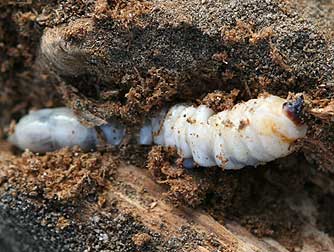
Three-inch long California prionus beetle larva

California prionus beetle
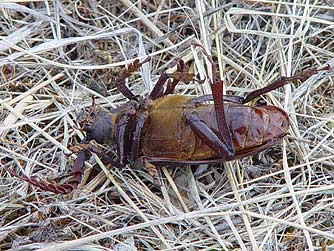
California prionus beetle underside
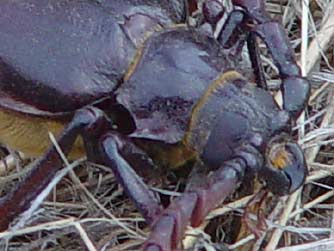
California prionus beetle - Prionus californicus
with coarse spines on pronotum and conical antennae
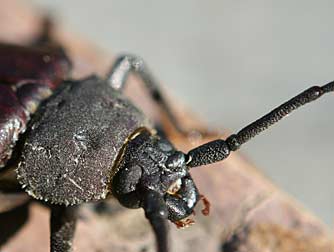
Compare to Ponderous borer beetle or Ergates spiculatus
with fine teeth on pronotum and cylindrical antenna segments
